Environment Agency – Abu Dhabi assesses microplastic levels in Abu Dhabi’s marine environment
)
ABU DHABI, 30th April, 2024 (WAM) -- The Environment Agency – Abu Dhabi (EAD) and the Abu Dhabi Quality and Conformity Council (QCC) announced a landmark partnership to address the growing global challenge of microplastic pollution in the Abu Dhabi marine environment.
This pioneering study, the first of its kind in the emirate, marks a crucial step in understanding and mitigating the impacts of microplastic contamination on our marine ecosystems.
This collaboration, which started in 2022 and will continue until 2025, brings together EAD's scientific marine expertise and research capabilities with QCC's state-of-the-art laboratory techniques and analysis proficiency. This synergy aims to conduct a comprehensive assessment of microplastic levels, providing invaluable insights into the health of our marine environment.
The initial environmental survey was conducted in 2022, undertaken by EAD’s marine team aboard ‘Jaywun’, the region’s most advanced marine research vessel. One hundred water samples were collected during a research mission, which covered the Atlantic Ocean, Mediterranean Sea, the Red Sea, the Gulf of Aden, the Arabian Gulf, and Abu Dhabi waters. Sediment samples were also collected from Abu Dhabi’s coast. All samples have been analysed by QCC, and the results have provided insight into the extent of the issue.
Assessment of the data by EAD has started to provide answers on the status of microplastic pollution. These findings are crucial to understanding the impact of these pollutants on marine organisms and will inform ongoing comprehensive environmental surveys encompassing water, sediment, and biota in emirate's marine environment. The alliance between EAD and QCC will create a methodology regimen, revolutionising the sampling and analysis of marine microplastics.
Faisal Al Hammadi, Executive Director of the Environmental Quality Sector at EAD, said, “Microplastics are tiny plastic particles that can persist in the environment for a long time. They pose a significant threat to ecosystems as they can be ingested by marine and terrestrial organisms, leading to potential harm to wildlife and ecosystem disruption. This partnership between EAD and QCC represents a significant step forward in addressing this pressing issue in Abu Dhabi. By combining expertise, the two entities aim to develop a tangible impact on the preservation and protection of the environment.”
Abdulsalam Al Hashmi, Director of the Environment Quality, Monitoring and Control Division at EAD, added, “In our bid to assess microplastic contamination levels, EAD is conducting comprehensive and ongoing environmental surveys. These involve the collection of marine sediment, water, and biota samples from key locations across Abu Dhabi's marine environment. The data and insights gained from this assessment will play a vital role in formulating strategies at both the local and national levels to effectively address and mitigate any impacts, and to institute a change in community practices.”
Abdalla Al Muaini, Executive Director of Central Testing Laboratory at QCC, said, “The partnership with EAD has allowed the Central Testing Laboratory (CTL) to underscore the significance of rigorous laboratory testing in uncovering the pervasive issue of microplastics in marine water. Through this partnership CTL will be utilising its advanced laboratory techniques and its technical resources to identify and quantify these minuscule plastic particles, discerning their origins and distribution within marine environments.”
Al Muaini added, “CTL firmly believes that prioritising laboratory testing of microplastics in marine water is an essential step toward fostering a sustainable future for our marine ecosystem. By advocating for increased research and fostering collaboration between scientific communities and environmental stakeholders such as this partnership, QCC aims to inspire collective action and drive innovative solutions to combat the intensifying threat of microplastic pollution. The detailed analysis shall provide crucial insights for EAD to utilize laboratory analysis and data when developing their proactive measures in preserving the delicate balance of marine life.”

